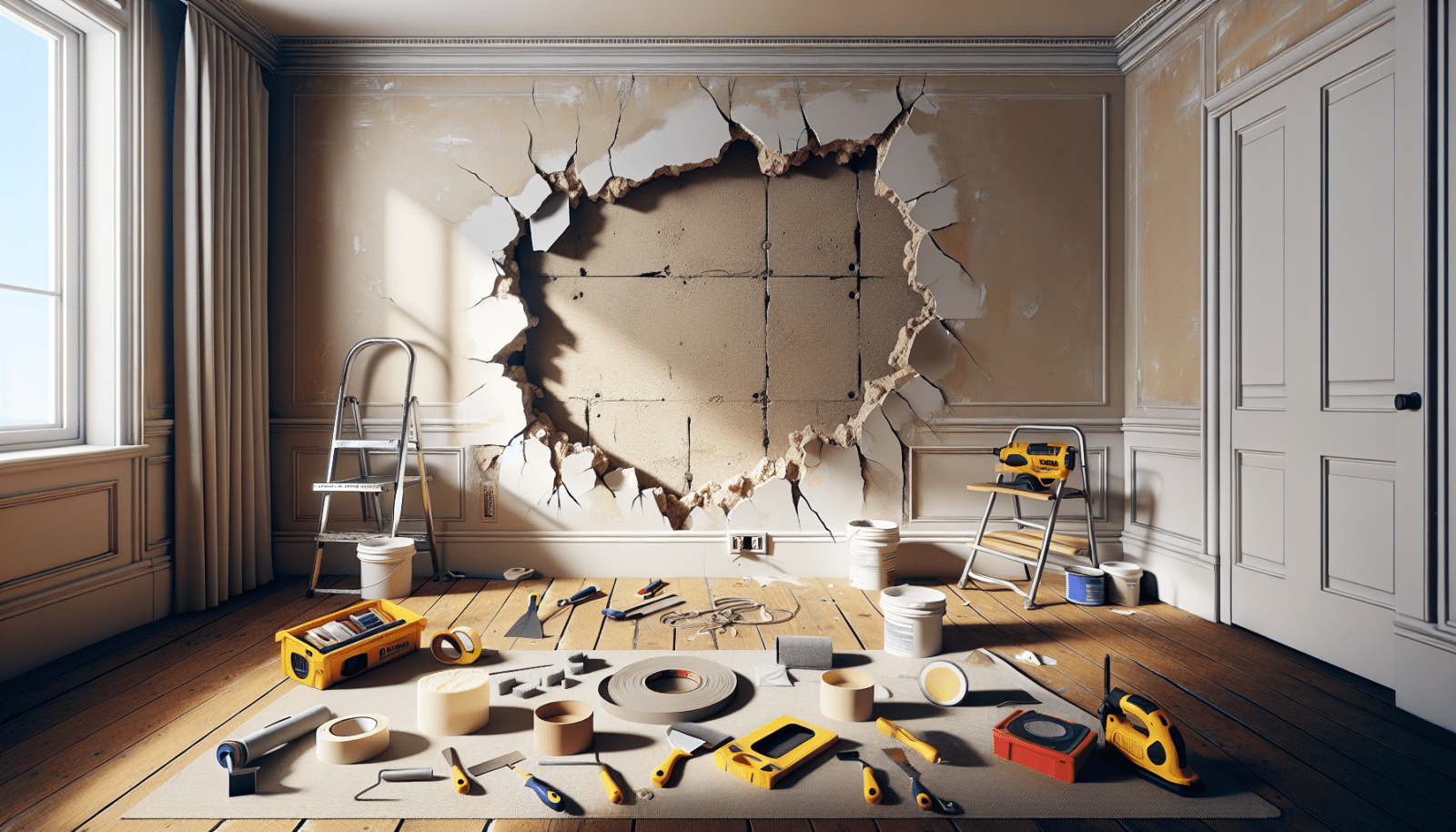At Utah Drywall & Repair, we know that dealing with drywall cracks can be a pesky challenge for homeowners. Not only do these unsightly blemishes detract from the beauty of your space, but ignoring them can lead to bigger issues down the road. Luckily, we’re here to share our top tips and tricks on tackling DIY drywall crack repair—empowering you to take control of your home repairs. Get ready to roll up your sleeves and achieve a flawless finish by following our expert advice!
Contents
Understanding the Types of Drywall Cracks
Drywall cracks come in various shapes and sizes, and understanding their different types is crucial for addressing them effectively. Some cracks result from normal settling, while others could be signs of deeper structural issues. Identifying the type of crack you’re dealing with is the first step in crafting an appropriate repair strategy.
Hairline cracks, which are thin and barely noticeable, are often the result of minor settling or seasonal temperature changes. On the other hand, larger cracks might indicate foundation problems or water damage, signaling the need for more comprehensive repairs. As you proceed with your DIY fix, recognizing these differences will help you decide on the best method for a lasting solution.
Gathering Your Repair Materials
Before diving into your Drywall Repair project, you’ll want to ensure you have all the essential materials at hand. Proper preparation will make the repair process much smoother and more efficient. So, think of this as your shopping list for a successful fix!
Start with the basics: joint compound or spackle, which will act as your filler. Pair this with drywall Tape or a mesh patch, depending on the size of the crack. Don’t forget your sandpaper or Sanding sponge, a putty knife for application, and a primer and paint that matches your wall. With these tools, you’re well on your way to a seamless repair experience.
Preparing the Crack for Repair
Now that you have your materials ready, it’s time to prepare the crack for repair. Proper preparation ensures the repair materials adhere well, creating a strong bond that lasts. This step is all about setting the stage for the main event.
Begin by cleaning the crack thoroughly, removing any loose debris or dust. You might need to widen the crack slightly using a utility knife, creating a V-shape. This process, known as “keying the crack,” allows the joint compound to penetrate deeply, enhancing its hold. Remember, a clean and prepped surface is the foundation of successful repair work!
Filling Small Cracks
When it comes to small cracks, the repair process is relatively straightforward and can be managed with minimal materials and effort. These minor imperfections may seem daunting, but they are easily rectified when approached methodically.
Start by applying the joint compound evenly over the crack, using a putty knife to smooth out the surface. Be sure to feather out the edges so that it blends seamlessly with the surrounding wall. Once the compound dries, sand the area lightly to ensure a uniform finish. It’s a simple process that can make a big difference in your home’s aesthetic!
Addressing Larger Cracks with Tape
Larger cracks require a bit more muscle, but don’t worry, we’ve got you covered. The key to tackling these bigger issues is to use drywall tape or a mesh patch, which provides extra support and stability to the repaired area. Here’s how you can effectively address those problematic cracks.
First, apply a thin layer of joint compound over the crack. Place the drywall tape onto the compound while it’s still wet, pressing firmly to ensure good adhesion. Then, cover the tape with another layer of compound, smoothing it out with your putty knife. Let it dry before sanding and applying a final coat, ensuring a smooth, durable finish. With a little patience, even the largest cracks won’t stand a chance!
Sanding for a Smooth Surface
Achieving a smooth surface is a crucial step in the drywall repair process. It’s what separates a DIY patch job from a professional-looking finish. So, let’s dive into the fine art of sanding.
Once the joint compound is completely dry, use your sandpaper or sanding sponge to gently sand the repaired area. Be careful not to over-sand; the goal is to blend the edges seamlessly into the rest of the wall. As you sand, periodically check for smoothness by running your hand over the surface. A smooth, invisible patch means you’ve done it right, preparing the wall for the finishing touches.
Priming and Painting
Your wall is now smooth and ready for its facelift! Priming and painting are the final touches that will bring your repair to life, ensuring it matches the surrounding wall perfectly.
Start by applying a layer of primer over the patched area. This step is crucial because it seals the compound, preventing any color discrepancies with the final coat of paint. Once the primer dries, go ahead and apply your matching paint color to achieve a seamless finish. Sit back and admire your handiwork—a job well done!
Common Mistakes to Avoid
Navigating drywall repair can be tricky, and even the best DIYers can fall into common pitfalls. We’ve put together a list of mistakes to watch out for, ensuring your repair process goes off without a hitch.
- Rushing the Drying Process: Allow each layer of joint compound to fully dry before moving on to the next step. This patience is key to preventing future cracks.
- Skipping Primer: Primer helps with adhesion and color consistency. Skipping it can result in visible patches on your wall.
- Using Excessive Compound: Apply just enough joint compound to cover the crack. Too much can cause unnecessary sanding and mess.
- Ignoring Large Cracks: Large cracks need additional reinforcement with tape to prevent them from reappearing.
- Neglecting Safety Gear: Protect yourself with goggles and a mask, especially when sanding, to avoid inhaling dust particles.
When to Call in the Professionals
While we’re all for the DIY spirit, some situations might call for professional attention. Understanding when to seek help will save you time, effort, and potential headaches down the road.
Consider reaching out to a professional if you encounter large, stubborn cracks or continuing issues after repair attempts. Structural problems or signs of water damage also warrant an expert’s eye. Utah Drywall & Repair is always here to provide quality service when you need a hand!
Conclusion
Armed with knowledge and determination, you’re now ready to tackle those unsightly drywall cracks head-on. For any assistance, feel free to reach out to us by phone at 801-406-6350 or Request a Free Quote.




